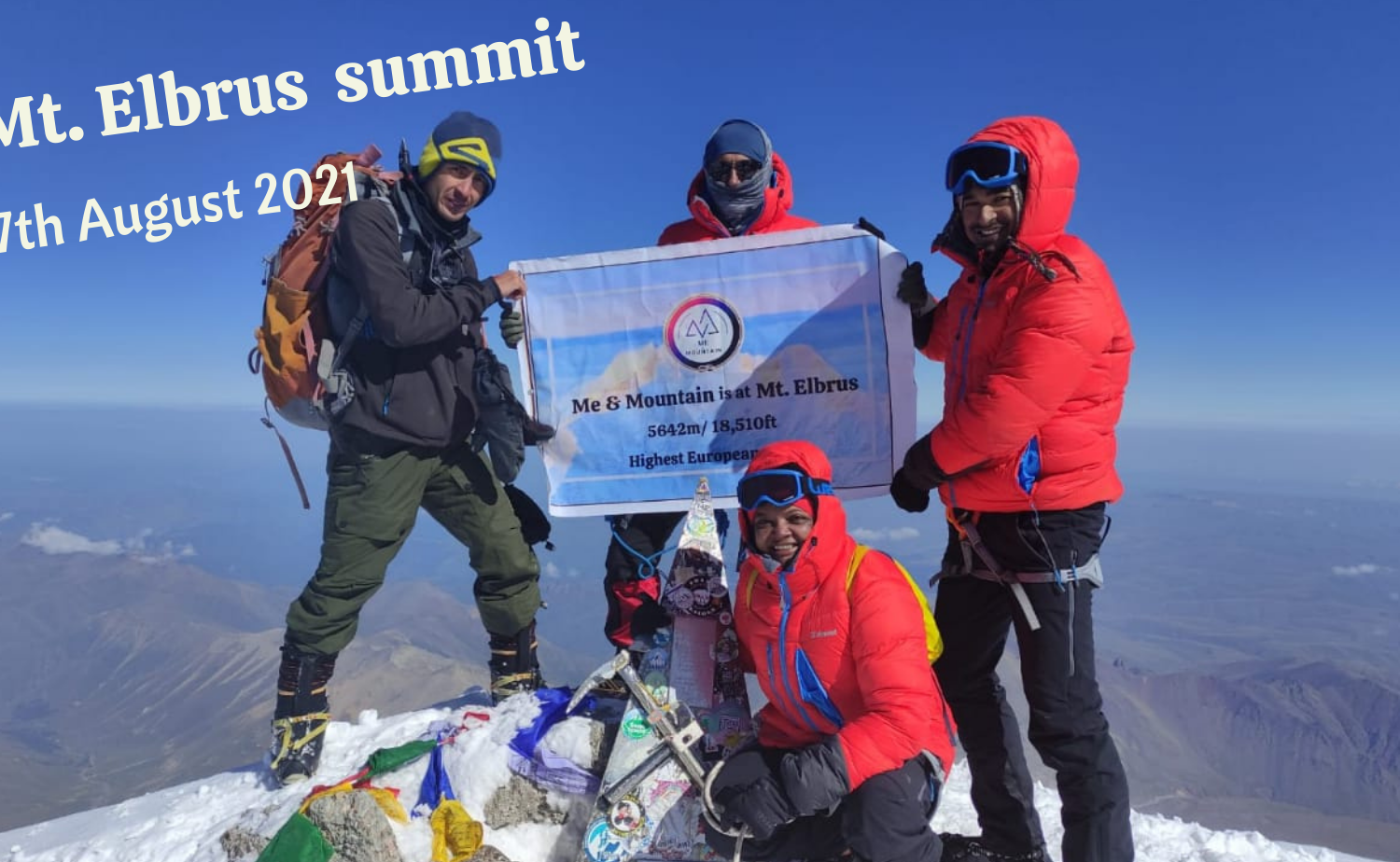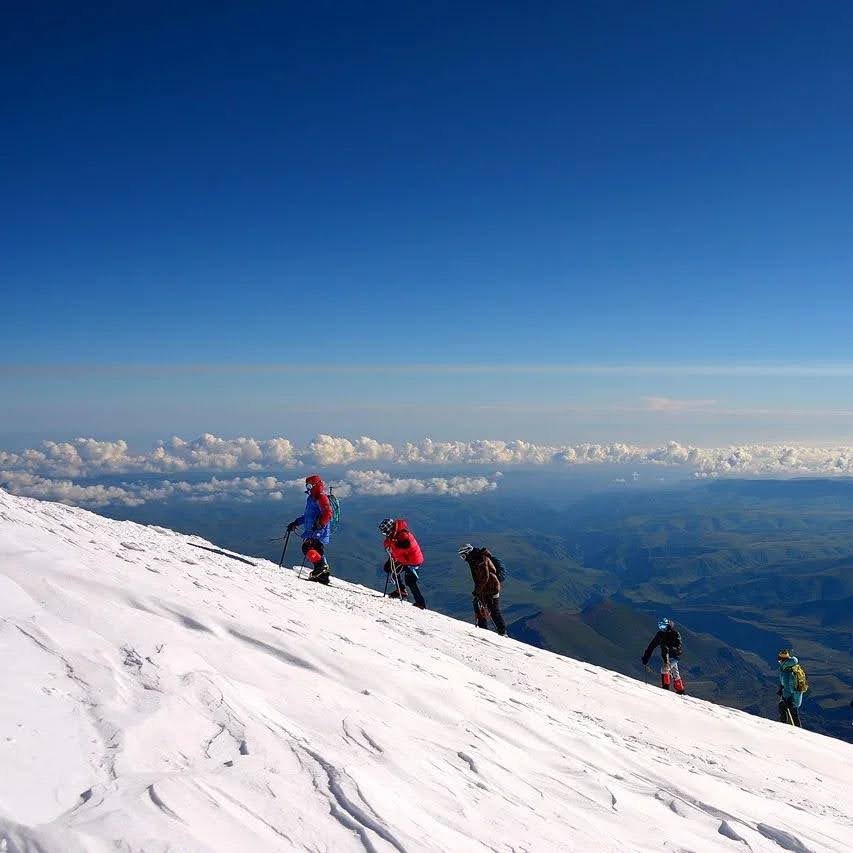Glimpse of Mt.Elbrus Expedition:
![]() Location: Caucasus Mountains, Russian Federation
Location: Caucasus Mountains, Russian Federation
![]() Duration: 7 Days/ 6 Nights
Duration: 7 Days/ 6 Nights
![]() Trek gradient: Difficult
Trek gradient: Difficult
![]() Maximum Altitude: 5,642 meters (18,510 feet) above sea level
Maximum Altitude: 5,642 meters (18,510 feet) above sea level
![]() Pickup/ Drop Point: Mineralnye Vody, Russia
Pickup/ Drop Point: Mineralnye Vody, Russia
![]() Best Season: May to September. July and August have the most stable weather.
Best Season: May to September. July and August have the most stable weather.
![]() Customized fees:
Customized fees:
Fees based on the final number of participants. Kindly contact +91-9051055011/ +91-8969336262 for the further detail before proceeding for the payment.


 Being a non-technical moderate-altitude mountaineering, Mt.Elbrus expedition is a perfect way to start off with your Seven Summits. Elbrus expedition is a great way to learn the Basic Alpine skills like self-arrest, use of crampons, ice axe, and roped travel.
Being a non-technical moderate-altitude mountaineering, Mt.Elbrus expedition is a perfect way to start off with your Seven Summits. Elbrus expedition is a great way to learn the Basic Alpine skills like self-arrest, use of crampons, ice axe, and roped travel.

























